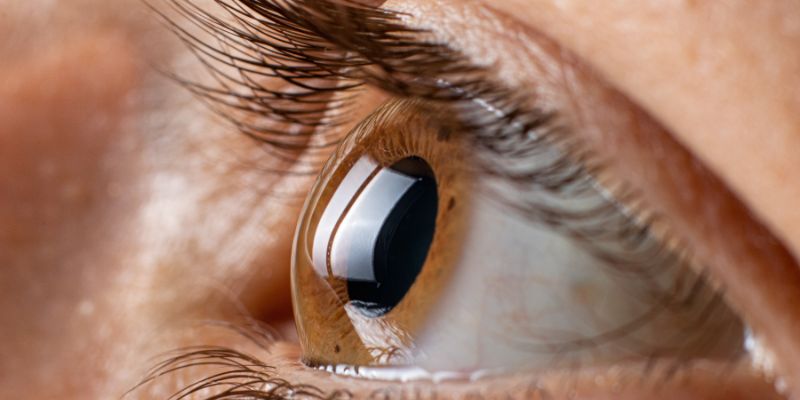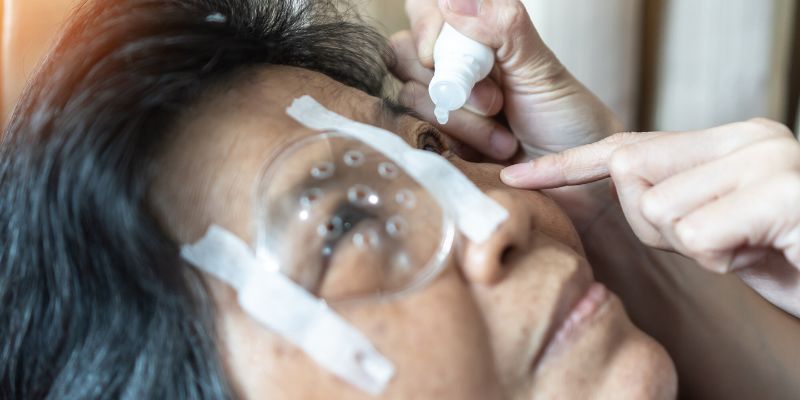Wet AMD (Age-Related Macular Degeneration) and Vision Loss: An Understanding
Age-related macular degenerationoften referred to as wet AMDis a terrible eye condition that mainly affects people 50 years of age and above. This disorder can cause rapid vision loss, especially in the middle of the visual field. Early identification and treatment are essential for slowing down the course of the disease. Though knowing the disease can be challenging, many people have unresolved questions.
This article will answer the most generally asked questions on Wet AMD. We will discuss what it is, enumerate its symptoms, and provide guidelines for managing it. Read on for more details on wet AMD and why it could impact your eyesight and quality of life. Understanding enables you to choose a proper action and take charge of your eye condition.

What Is Wet AMD?
The hallmark of wet AMD is aberrant blood vessel development behind the retina. Fast and acute vision loss results from these recently developed blood capillaries leaking blood or fluid. Wet AMD advances far more quickly than dry AMD, the form of macular degeneration connected with ageing. The macula, the core area of the retina essential for sharp, detailed vision, is the area most affected by the disorder.
The macula suffers damage as individual blood vessels enlarge and leak, reducing general vision and small-detail perception. Wet macular degeneration due to old age can cause permanent loss of central seeing without suitable treatment, affecting daily activities such as reading and driving. Good disease control and preservation of vision depend on early detection. See an eye care provider immediately if you find any abrupt changes in your vision.
What Are the Symptoms of Wet AMD?
The signs of wet macular degeneration due to age (AMD) can strike unexpectedly and quickly worsen, greatly compromising central vision. Reducing the speed of eyesight loss requires early identification. Typical warning signals to know about are:
- Distorted Vision: Usually, macular degeneration results in visual distortions like straight lines that seem wavy or fuzzy.
- Faded Colors: Colors could fade over time and seem drab or antique instead of brilliant.
- Central Vision Loss: As central vision deteriorates, driving, reading, or identifying familiar individuals might become progressively more difficult.
- Blind Spots: Dark or empty patches forming towards the middle of your vision range are known as blind spots. Sometimes, these areas cause further distortion in either one or both eyes.
Being alert about these signs can enable you to seek quick medical assistance. If you undergo any of these changes, you should immediately see an eye doctor to protect your vision and general eye condition.

What Causes Wet AMD?
When aberrant blood vessels form underneath the retina, specifically under the macula, wet age-related macular Degeneration (AMD) can result. Although it is unknown what causes this disorder, several risk factors raise the likelihood of having it. Age is the most critical determinant; most instances occur in those over 50. Smoking considerably increases the risk since it damages blood vessels and speeds up aging.
Family history and genetics are significant factors in this. Those with a family history of AMD have a higher chance of getting the condition themselves. Variables contributing to this disorder are elevated blood pressure, weight gain, and extended UV radiation exposure. You can reduce your risk by changing your lifestyle, cutting out smoking, and adopting a nutrient-dense diet.
How Is Wet AMD Diagnosed?
Wet AMD is usually diagnosed after a thorough eye exam. Your doctor will check your vision and search for evidence of blood or fluid in your retina. Examining a grid of clean lines is the basis of the Amsler grids test, a common diagnostic technique. Curved or distorted lines will point to macular tissue damage. The optical coherence tomography (OCT) technique, which precisely captures retina images through light waves, is another viable test. It lets your doctor view thorough structures and any anomalies right away.
Fluorescein angiography is also ordered during the diagnostic phase. A dye is put into your bloodstream during this operation to accentuate any aberrant circulatory system in the retina. It facilitates your doctor's assessment of the condition's degree. Effective management of wet AMD depends on early detection since prompt intervention helps to slow down vision loss and enhance your level of life.
What are the Treatment Options Available for Wet AMD?
The goal of treatment for wet age-related macular Degeneration (AMD) is to forestall or limit the formation of aberrant blood vessels. Anti-VEGF therapy is one of the most promising treatments now available. It involves injecting medication directly into the eye to prevent the protein that promotes the formation of blood vessels. These injections can help keep the condition stable and sometimes even improve it.
Laser therapy is another choice. This method uses focused light beams to close off leaking blood arteries. For some therapeutic reasons, photodynamic therapy combines laser treatment with medicine. Eye tests and treatment as soon as possible are essential for preserving eyesight and slowing down progressive wet AMD.
Can Wet AMD be Prevented?
Though there is no proven way to stop Wet AMD, you can reduce the risk by:
- Stop smoking since it greatly raises the risk of AMD development.
- A diet heavy in leafy greens, fruits, and fish provides omega-3 fatty acids and antioxidants that support eye health.
- Another helpful habit is wearing sunglasses to guard your eyes against damaging UV light.
- Regular eye tests are vital, particularly in the family history of AMD.
- Early identification and lifestyle modification help lower the Wet AMD risk and protect your eyesight.
- For optimum results, keep proactive in preserving your eye health.
Conclusion:
One major eye disorder that can quickly damage vision is wet AMD. Effective management of this condition depends on early diagnosis and treatment. Many people with Wet AMD gain from developments in medical treatments that improve their standard of living. See an eye doctor whenever you have any indications or risk factors. Changing your lifestyle and shielding the retinas from ultraviolet rays will also help lower your risk. Knowing Wet AMD will help you to take charge of your eye condition and act aggressively to protect your vision.












